Confession: I was very excited to watch the Gladiator sequel. I grew up in the 80s and 90s, and Russell Crowe’s Gladiator was hands-down one of my favorite films from childhood. The music, the scenery, the acting, the story—brilliant.
Little did I know back then that I would grow up to be a historian and Bible scholar focusing on early Christianity in the Roman world. Perhaps, in a small way, films like Gladiator inspired me to dig deeper into that famous world of Roman power and conquest and how this little band of Jesus followers fit into (or rather were misfits of) that environment.
So: Gladiator 2. Twenty four years later, we have Ridley Scott again, no Russell Crowe (old spoiler: Maximus is dead), but some pretty big names in Denzel Washington, Connie Nielsen, Pedro Pascal, and Joseph Quinn. Now, let’s get out of the way immediately the fact that this sequel can never live up to the first movie—sequels rarely do. So, my expectations were very low, and thus I was very pleased with the final product.
Disclaimer: My notes below will make the most sense if you’ve seen the movie!
How “Accurate” is Gladiator 2 in its Portrayal of the Roman World?
I think this is probably the wrong question, or a question that will inevitably lead to disappointment for any movie-goer. I’ve watched or read a few reviews from historians who pan the movie for inaccuracies, especially anachronisms (like Macrinus reading a newspaper). Well, I’ve got bad news for you: Romans didn’t speak English either, so modern portrayals are doomed from the start! You have to see these kinds of movies as a blend of historical contextualization and modern adaptation, otherwise you will lose the entertainment value and a filmmaker’s choices that allow the viewer to connect with the characters and plot.
Things I loved to See!
In my obsession with the Roman empire, I was very pleased to see a number of things in the film. I will just list some of them with brief comments.
Discrimination: Is it possible that Macrinus (played by Denzel Washington) was an African man who rose to senatorial power in the Roman empire? Yes! Truth be told, the character Macrinus is somewhat based on the actual historical Marcus Opellius Macrinus, who was born in Algeria. Now that doesn’t mean the historical Macrinus was black (he was not), but we should also note that Romans did not see themselves as “white.” Romans didn’t discriminate based primarily or solely on color. They did stereotype and comment on skin color sometimes and there was plenty of cultural discrimination—but it wasn’t primarily a “color” issue.
Virgil: At one point, Hanno quotes Virgil to a Roman Senator. I love this, because Virgil was extremely popular, kind of like how many Westerners today are familiar with popular Shakespearean quotes. This is the bit Hanno quotes from Virgil:
The gates of hell are open night and day; Smooth the descent, and easy is the way: But to return, and view the cheerful skies, In this the task and mighty labour lies.
This is a standard English translation, but Virgil wasn’t talking about “hell,” certainly not the Christian view. But I did like to see this bit of Roman culture woven into the film. This is just the kind of saying or snippet a young Roman might learn in school.
Roman Conquest and Expansion: The movie begins with Roman conquest of Numidia. It is not quite the epic battle sequence we had in Gladiator 1, but it was still a fair portrayal of the blood thirst of Rome and their appetite for expansion. That is what they were known for, and famously good at. As Tacitus observed, “They create a wasteland and call it peace.”
Games, Games, and More Games! One of the key themes of the movie (obviously, since it is about gladiators) is Roman love for “games,” what we would call “sports” but in this case with lots of bloodshed. This was a top-choice of entertainment, and this was especially “appropriate” (in Roman view) when there was a major war victory to celebrate. Conquest abroad, bloody games at home. The origins of gladiatorial games go back to funeral ceremonies honoring great war generals; in their remembrance, there would be reenactments of famous war stories, with slaves playing the famed characters—and why not have them fight to the death!
Honoring Great Generals: Part of the plot of Gladiator 2 is the tension between General Acacius (Pedro Pascal) and the two Emperors Geta and Caracalla. Geta and Caracalla were clearly not experienced soldiers, and Acacius was, and you can tell the Roman people loved Acacius for his courageous deeds much more than the spoiled and petulant young regents. Absolutely realistic! Rome cherished its beloved generals: Julius Caesar, Pompey, Germanicus, Sulla.
Slaves and Gladiators as Prisoners of War: Yup, there were two main ways to acquire slaves. You breed them (slaves born of slaves) or you conquer them. Many Roman slaves were foreigners taken in war, and those who had fighting skills were a no-brainer for gladiatorial combat.
Powerful Women in a Man’s World: Gladiator 2 portrays Lucilla (deceased Emperor Commodus’ sister) as a socially powerful figure and that is completely realistic. Now, to be powerful, you had to have social status, usually money, and often shrewdness in what you said and who you made deals with. But there were a number of real Roman women who were extremely powerful: Agrippina the Younger, Fulvia (wife of Mark Antony), and especially Livia Drusilla, wife of Caesar Augustus.
Things That Were Not Accurate
Again I will say these things aren’t dealbreakers, they didn’t “ruin” the movie for me; I watched the movie for its entertainment value, not as a documentary. But these are things I noticed and worth mentioning.
White Statues and Buildings? In the film, all the statues and most of the buildings were completely white. That is what the remains look like today, but archaeologists and historians have convincing proof that many/most statues were painted and there were colors on many buildings, especially with accents of red, gold, blue, green, and/or black.
Below is a fresco depicting Boscoreale, Italy, Late Republic ~50BC.
Animal-Riding in the Colosseum?: One of the scenes that is commented on the most in reviews of Gladiator 2 involves a man riding a rhino. Yes: animals did enter the Colosseum, but not as vehicles. Some game “spectacles” included hunting, but, sorry, no free rides.
Live or Die? Both Gladiator 1 and 2 depict a lot of gladiator deaths, and they make much of the “live or die” verdict of the emperor. Truth be told, well-trained gladiators (who fought on a regular basis) were far too valuable to let them die, so “mercy” was extremely common. The fans wanted to see their favorites live to fight another day.
Water Spectacles: Another much-discussed scene in Gladiator 2 is the naval battle, where the Colosseum is full of water (and sharks!). Scholars are divided on whether the Colosseum could or did have sea battles staged. If so, the water would be shallow and the boats would be hard to move or maneuver (sorry, no sharks), but there are ancient writers who mention such spectacles. This is from Martial:
What Language? There is one scene where one of the emperors asks “Hanno” (pretending to be a foreigner) what his name is. Now, the movie exchange took place in English, but I was curious what language the emperor would have used when talking to a foreigner. A casual moviegoer might guess Latin, but I think it is more likely to be Greek (thanks to the spreading of Greek language far and wide through Alexander the Great). It’s an interesting question which the movie just can’t get into.
My Quick Thoughts on the Plot of the Movie
It was clearly designed to mirror the original and offer lots of fanfare, and it did that. Denzel was outstanding, Pedro, Joseph Quinn. It didn’t quite have the awe-inspiring dynamic of the original, but back then CGI was pretty new, and seeing the Colosseum the first time around was mind-blowing. Now, we are so used to amazing visuals, it takes a lot to impress.
I thought the storyline overall was interesting and the plot twist was fun, but I was disappointed with the last few minutes and how the movie ended overall (with Macrinus).
I think one of the biggest problems with the film is that they didn’t really develop the love story of Hanno and his wife, Arishat. So (spoiler alert) when she dies at the very beginning of the movie, the audience doesn’t really feel much of that tragedy—which is supposed to fuel the revenge plot. They could have taken an extra ten minutes to make us appreciate Arishat more and join Hanno in his grief.
So there you have it, my quick and dirty review comments. Watch the film, enjoy it for entertainment, and don’t be a history snob.

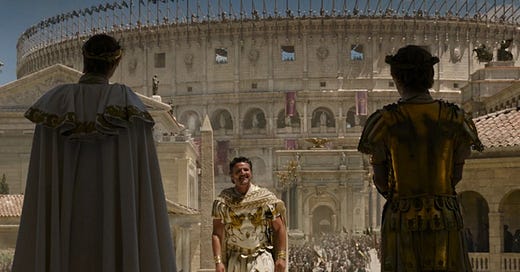


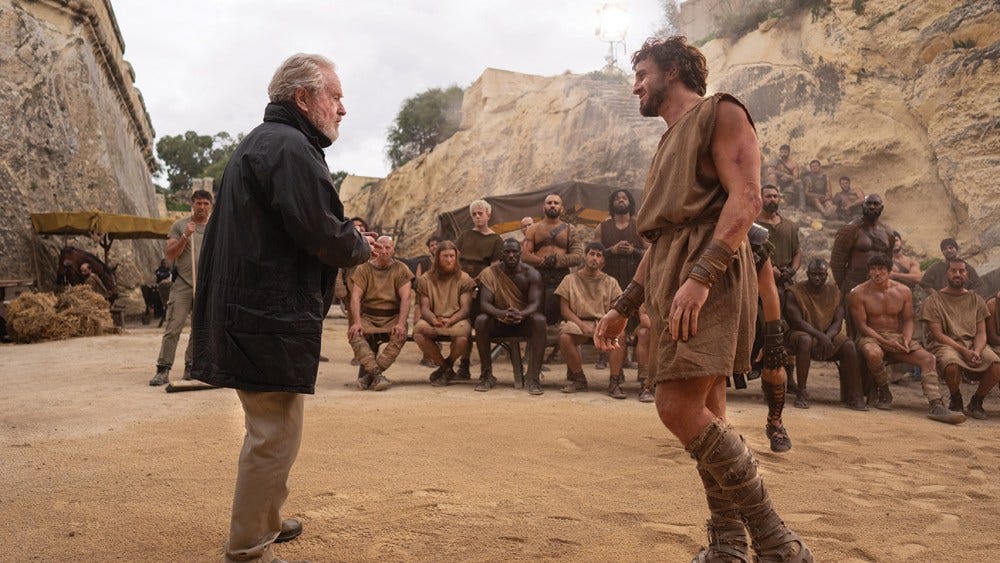

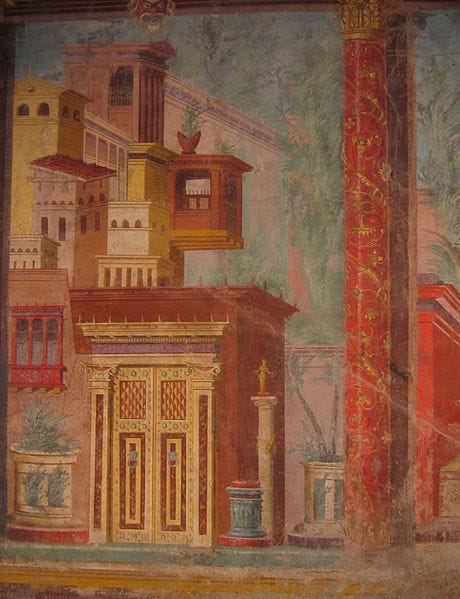
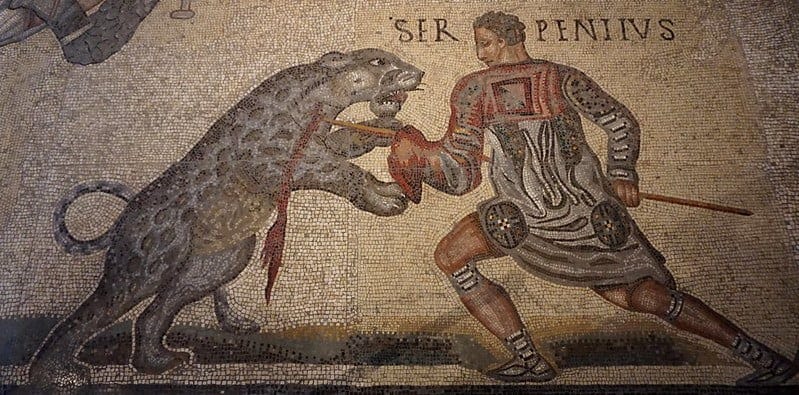
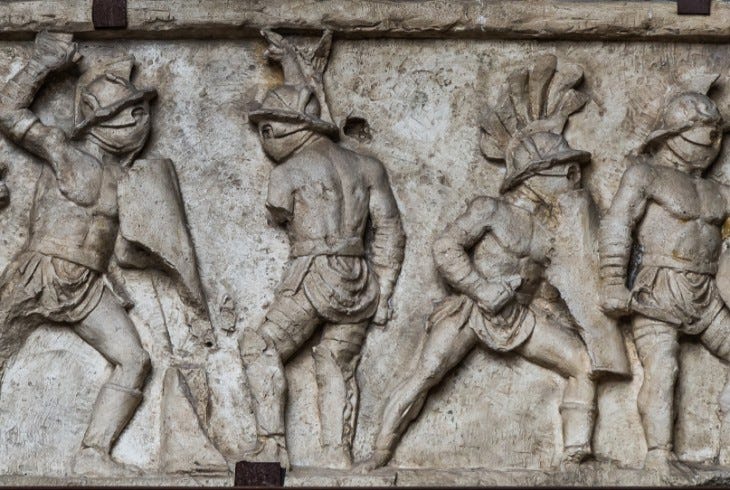
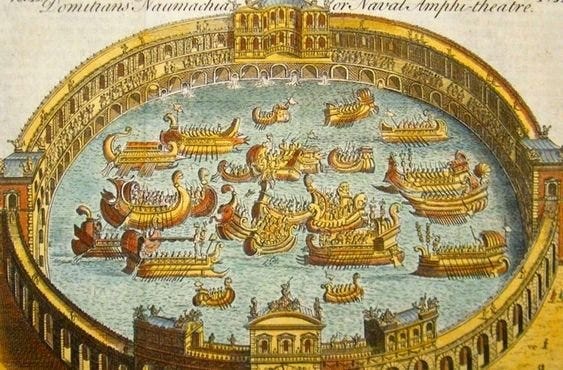
I agree a movie is made for entertainment not as a documentary - so remember to suspend your disbelief! I appreciated your historical insight and positivity!
I will watch the movie and return and read the rest. I loved The Gladiator and am looking forward to the sequel.